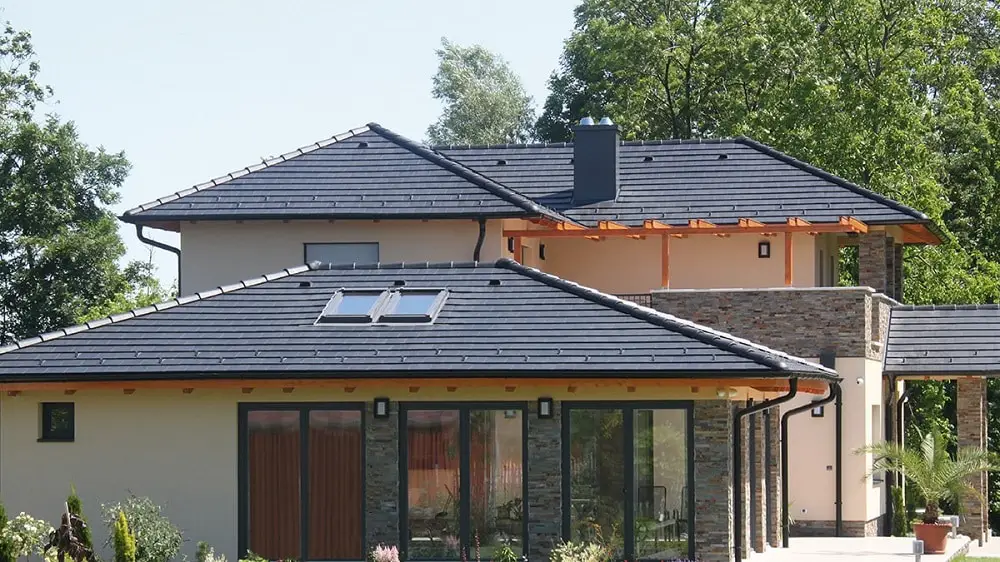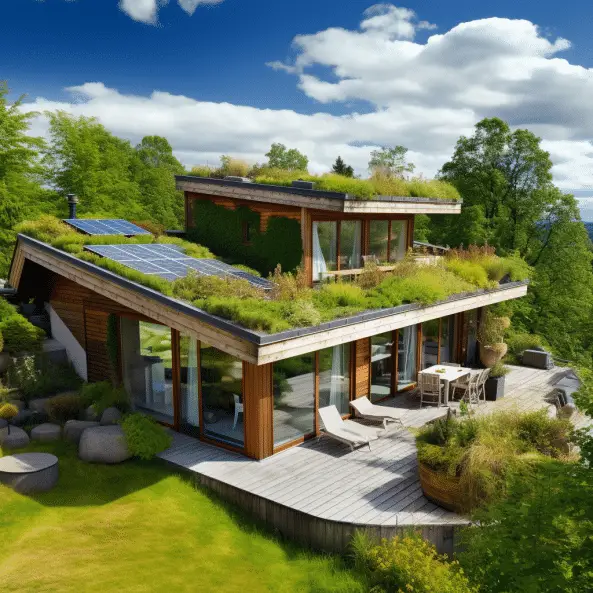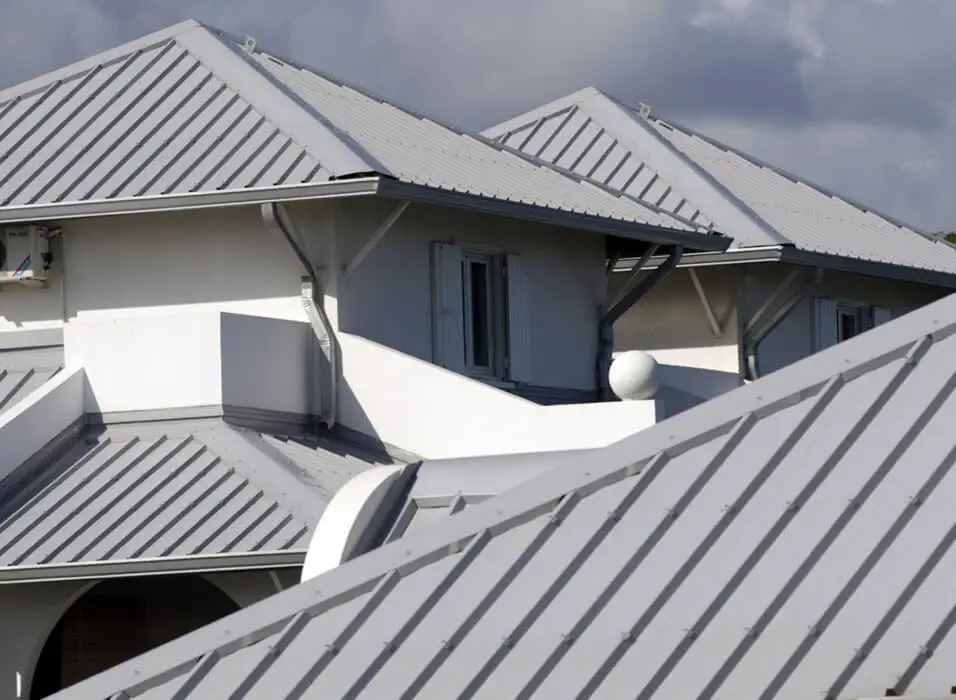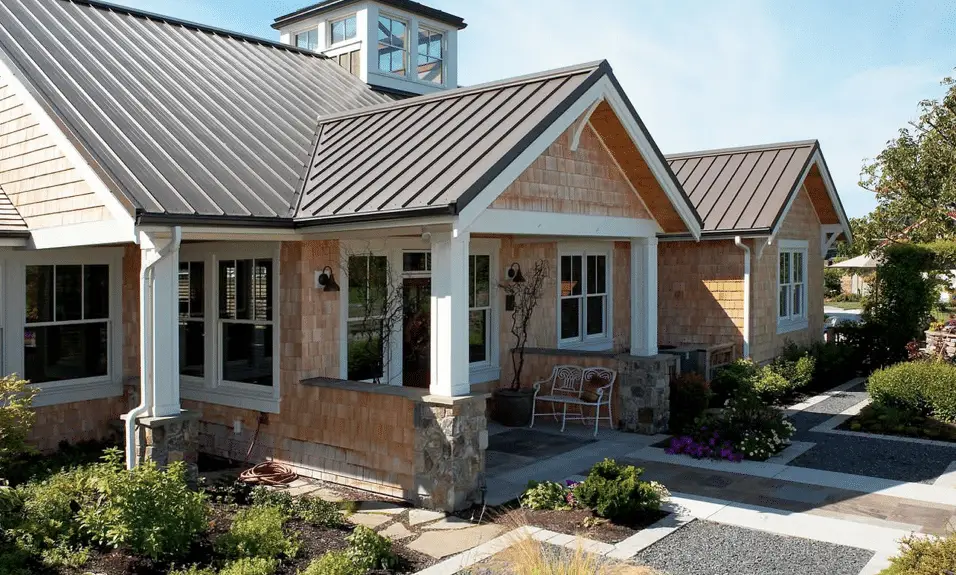What Are The Disadvantages Of A Metal Roof
Introduction
What Are The Disadvantages Of A Metal Roof: Metal roofs can be prone to denting. While metal flat roofs are generally durable and can withstand harsh weather conditions, they are susceptible to denting from falling branches, hail, or other heavy objects. This can be a concern for homeowners who live in areas prone to severe weather events. However, it is important to note that not all metal roofs are created equal, and some materials, such as steel, are more resistant to denting than others.
In addition, metal roofs can be challenging to install and repair. The specialized installation techniques required for metal roofs often require professional expertise, which can add to the overall cost. Moreover, finding contractors with experience in installing and repairing metal roofs may be more difficult compared to those familiar with traditional roofing materials. This can lead to delays and potential issues if repairs or maintenance are needed in the future.
In conclusion, while metal roofs offer numerous advantages such as durability and energy efficiency, they also come with their fair share of disadvantages. The initial cost, potential noise, susceptibility to denting, and installation challenges are factors that homeowners and builders should consider before opting for a metal roof. However, it is important to weigh these drawbacks against the long-term benefits and potential cost savings that metal roofs can provide. By making an informed decision, homeowners can choose the roofing material that best suits their needs and preferences.”
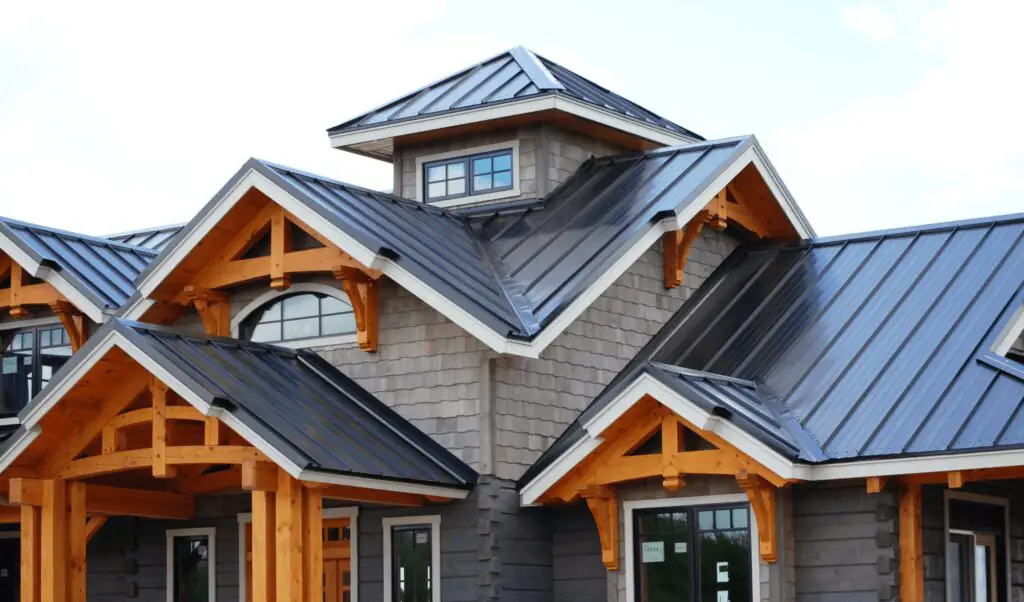
What is a negative aspect of a metal roof?
First, standing seam metal roofs are tougher to repair. Standing seam metal roofs are sturdy, although panels can break. Rust from storm damage, painted finish damage, or improper walking on metal panels could cause this.
Homeowners choose metal roofs for their durability, longevity, and energy efficiency. Like any roofing material, it has drawbacks that should be examined before choosing. This article discusses a metal roof’s drawback and its effects.
Dents are a drawback of metal roofs. Metal roofs are strong and weatherproof, but improper installation and maintenance can cause denting. In locations with significant rainfall or snowfall, water or snow on the roof can stress the structure and cause severe damage.
What are the two biggest concerns to a metal roof?
Top 7 Most Common Metal Roof Problems
- Metal Roof Leaking. A leaking roof is the last thing anyone wants.
- Corrosion.
- Chalking & Fading.
- Installation Errors.
- Dissimilar Metals & Materials.
- Scuffing & Scratching.
- Oil Canning.
- Know Manufacturers That Make Quality Metal Products.
Weather Resistance:
One of the primary concerns with metal roofs is their susceptibility to extreme weather conditions. Metal roofs can be prone to denting and damage during hailstorms or heavy snowfall. However, it is important to note that not all metal roofs are created equal. Opting for high-quality metal roofing materials, such as steel or aluminum, can significantly enhance the weather resistance of the roof. These materials are designed to withstand harsh weather conditions and are less likely to dent or sustain damage.
Proper Installation:
Another significant concern when it comes to metal roofs is the importance of proper installation. Improper installation can lead to various issues, including leaks, poor insulation, and even structural damage. Therefore, it is crucial to hire experienced and reputable roofing contractors who specialize in metal roof installations.
Maintenance and Insulation:
While metal roofs are generally low-maintenance, it is essential to perform regular inspections and maintenance to ensure their longevity. Over time, metal roofs may develop small cracks or gaps, which can lead to leaks if left unaddressed. Additionally, proper insulation is crucial to prevent heat loss during colder months and to minimize heat gain during hotter months. Adequate insulation can help homeowners save on energy costs and maintain a comfortable indoor environment.
The two biggest concerns associated with metal roofs are weather resistance and proper installation. By choosing high-quality materials and hiring experienced professionals for installation, homeowners can mitigate these concerns. Additionally, regular maintenance and proper insulation are essential for ensuring the longevity and efficiency of a metal roof. By addressing these concerns, homeowners can enjoy the numerous benefits that metal roofs offer, including durability, longevity, and aesthetic appeal.
What happens when lightning strikes a metal roof
When lightning strikes a metal roof, it can have various effects depending on the specific circumstances. Metal roofs are conductive, meaning they can easily transmit electrical currents. This conductivity can make metal roofs more susceptible to lightning strikes compared to other roofing materials. In this article, we will explore what happens when lightning strikes a metal roof and the potential consequences.
Effects of Lightning Strikes:
When lightning strikes a metal roof, the electrical current typically travels along the metal surface, seeking the path of least resistance. This can result in several effects:
1. Fire Hazard:
One of the most significant risks associated with lightning strikes on metal roofs is the potential for fire. The intense heat generated by the electrical current can ignite flammable materials within the roof structure or the building itself. This can lead to severe damage or even the complete destruction of the property.
2. Structural Damage:
The immense power of a lightning strike can cause structural damage to a metal roof. Additionally, the shockwave produced by the strike can cause damage to nearby structures or objects.
3. Electrical System Disruption:
Lightning strikes can induce power surges that travel through the electrical wiring of a building. This can damage or destroy electronic devices, appliances, and electrical systems. The surge can also cause power outages or disrupt the functioning of various electrical components.
4. Personal Safety Concerns:
When lightning strikes a metal roof, there is an increased risk of electrical shock for individuals inside the building. The electrical current can travel through the metal structure and potentially reach people or objects in contact with it. It is crucial to take appropriate safety measures during a lightning storm to minimize the risk of injury or electrocution.
Are metal roofs noisy in the rain?
The short answer is: It depends. Metal roofs without much else, such as an open frame roof on a barn or warehouse, would be WAY louder than an asphalt shingle system. But, with a modern metal roofing system, properly installed, rain noise would be much more comparable to what we see in an asphalt shingle roof.
Many homeowners considering metal roofs often wonder if they will be noisy during rainfall. The sound of rain hitting a metal surface can be quite loud, leading to concerns about noise levels inside the house. However, it is important to understand that the noise level of a metal roof during rain depends on various factors, including the type of metal used, the roof’s construction, and the presence of insulation or other soundproofing materials.
The construction of the roof also plays a crucial role in determining the noise level during rainfall. Metal roofs that are installed directly on the roof deck without any additional layers or insulation are more likely to produce louder noises. On the other hand, roofs with multiple layers, such as an underlayment or insulation, can help absorb and dampen the sound of raindrops hitting the metal surface. Additionally, the pitch or slope of the roof can affect noise levels, as steeper roofs tend to be quieter due to the faster runoff of rainwater.
Is a metal roof better than tiles?
While clay tile adds a distinct charm and aesthetic, metal roofing is the superior choice in terms of performance, strength, durability, longevity and more. Metal roofing also comes out on top when it comes to: Maintenance and Repair Costs: A clay tile roof requires regular cleaning, inspections and repairs.
When it comes to choosing the right roofing material for your home, there are several options available in the market. Two popular choices are metal roofs and tiles. Both have their own set of advantages and disadvantages, making it essential to consider various factors before making a decision. In this article, we will explore the benefits and drawbacks of metal roofs and tiles, helping you determine which option is better suited for your needs.
Advantages of Metal Roofs:
One of the primary advantages of metal roofs is their durability. Metal roofs are known for their longevity and can last up to 50 years or more with proper maintenance. They are resistant to cracking, shrinking, and warping, making them an excellent choice for areas with extreme weather conditions. Additionally, metal roofs are fire-resistant, providing an added layer of safety for your home.
Another benefit of metal roofs is their energy efficiency. Metal reflects sunlight, reducing the amount of heat absorbed by your home. This can result in lower cooling costs during hot summer months. Furthermore, metal roofs are often made from recycled materials and can be recycled again at the end of their lifespan, making them an environmentally friendly choice.
Advantages of Tiles:
Tiles, on the other hand, offer their own unique advantages. One of the key benefits of tiles is their aesthetic appeal. They come in a variety of colors, shapes, and styles, allowing you to choose a design that complements the architectural style of your home. Tiles can add a touch of elegance and sophistication to your property, enhancing its overall curb appeal.
In addition to their visual appeal, tiles are also known for their durability. They can withstand harsh weather conditions, including heavy rain, strong winds, and hailstorms. Tiles are resistant to fire, rot, and insect damage, ensuring that your roof remains intact and protected for years to come. Furthermore, tiles provide excellent insulation, helping to keep your home cool in the summer and warm in the winter.
Additionally, metal roofs can be prone to denting if struck by large hail or falling branches. While metal roofs are generally durable and can withstand harsh weather conditions, extreme impacts can cause cosmetic damage.
Are there any disadvantages associated with the installation process of metal roofs?
Yes, there are a few disadvantages associated with the installation process of metal roofs. One of the main drawbacks is the complexity and expertise required for proper installation. Metal roofs are not as straightforward to install as traditional asphalt shingle roofs, and they often require specialized knowledge and skills. This means that hiring a professional installer who is experienced in working with metal roofs is crucial to ensure a successful installation.
Another disadvantage is the potential for noise during the installation process. Metal roofs can be quite noisy when it rains or hails, and this noise can also be amplified during the installation. It is important to consider this factor, especially if the building is located in an area with heavy rainfall or frequent storms.
Additionally, the installation of metal roofs can be more time-consuming compared to other roofing materials. The process involves careful measurement, cutting, and fitting of the metal panels, which can take longer than installing traditional roofing materials. This can result in increased labor costs and longer project timelines.
How does the cost of a metal roof compare to other roofing materials, and what are the disadvantages of its pricing?
When comparing the cost of a metal roof to other roofing materials, it is important to consider both the upfront expenses and the long-term value. Metal roofs tend to have a higher initial cost compared to traditional asphalt shingles or other roofing options. This is primarily due to the higher cost of materials and the specialized installation techniques required for metal roofs. However, it is crucial to note that while the upfront cost may be higher, metal roofs offer significant long-term savings and benefits.
One disadvantage of the pricing for metal roofs is the initial investment required. The cost of materials, such as steel or aluminum, can be higher than traditional roofing materials. Additionally, the installation process for metal roofs often requires skilled professionals, which can add to the overall cost. However, it is important to consider the durability and longevity of metal roofs. They have a much longer lifespan compared to other roofing materials, which can offset the initial investment over time.
Another disadvantage of the pricing for metal roofs is the potential for higher insurance premiums. Some insurance companies may charge higher rates for homes with metal roofs due to the perception that they are more expensive to repair or replace in the event of damage. However, it is essential to check with your insurance provider to understand their specific policies and any potential cost implications.
What are the environmental disadvantages of using metal roofs?
Additionally, the disposal of metal roofs at the end of their lifespan can pose environmental challenges. The recycling of metal roofing materials is possible, but it requires specialized facilities and processes. Improper disposal of metal roofs can lead to them ending up in landfills, where they may take a long time to decompose and potentially release harmful substances into the environment.
Therefore, while metal roofs have many environmental advantages, it is important to consider the potential drawbacks associated with their production and disposal.
Are there any specific maintenance or durability concerns that come with metal roofs, and what are their disadvantages?
When it comes to maintenance and durability, metal roofs generally have several advantages. They are known for their longevity and can often outlast other roofing materials. Metal roofs are resistant to rot, insect damage, and fire, making them a durable choice for many buildings. Additionally, they require minimal maintenance, as they do not easily accumulate debris or suffer from issues like mold or mildew growth.
However, there are a few disadvantages and concerns to consider regarding the maintenance and durability of metal roofs. One concern is the potential for denting. While metal roofs are generally strong and resistant to impact, they can still be susceptible to denting from heavy hail or falling branches. Additionally, if a metal roof is not properly installed or if it experiences extreme weather conditions, it may be prone to loosening or lifting, which can lead to leaks and water damage.
Another maintenance concern with metal roofs is the possibility of corrosion. Regular inspections and maintenance can help identify and address any potential corrosion issues before they become significant problems.
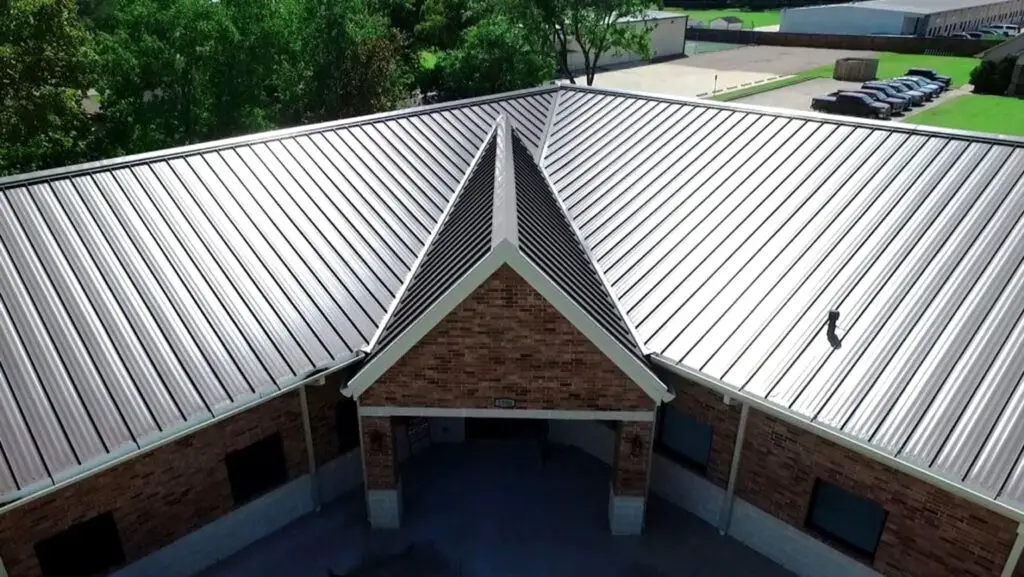
Conclusion
A metal roof is a popular choice for many homeowners due to its durability, longevity, and energy efficiency. However, like any other roofing material, it also has its disadvantages that should be considered before making a decision. One of the main disadvantages of a metal roof is its initial cost. Metal roofs tend to be more expensive than traditional roofing materials such as asphalt shingles. The higher cost can be a deterrent for some homeowners, especially those on a tight budget.
Another disadvantage of a metal roof is the potential for noise. During heavy rain or hailstorms, the sound of raindrops hitting a metal roof can be quite loud. This can be bothersome for some homeowners, especially those who are sensitive to noise.
Maintenance and repair can also be more challenging with a metal roof. While metal roofs are generally low-maintenance, they can still require occasional repairs or maintenance work. Finding a qualified professional who specializes in metal roofing can be more difficult compared to finding someone experienced with traditional roofing materials. Additionally, if a repair is needed, matching the color and style of the existing roof can be more challenging with a metal roof.



